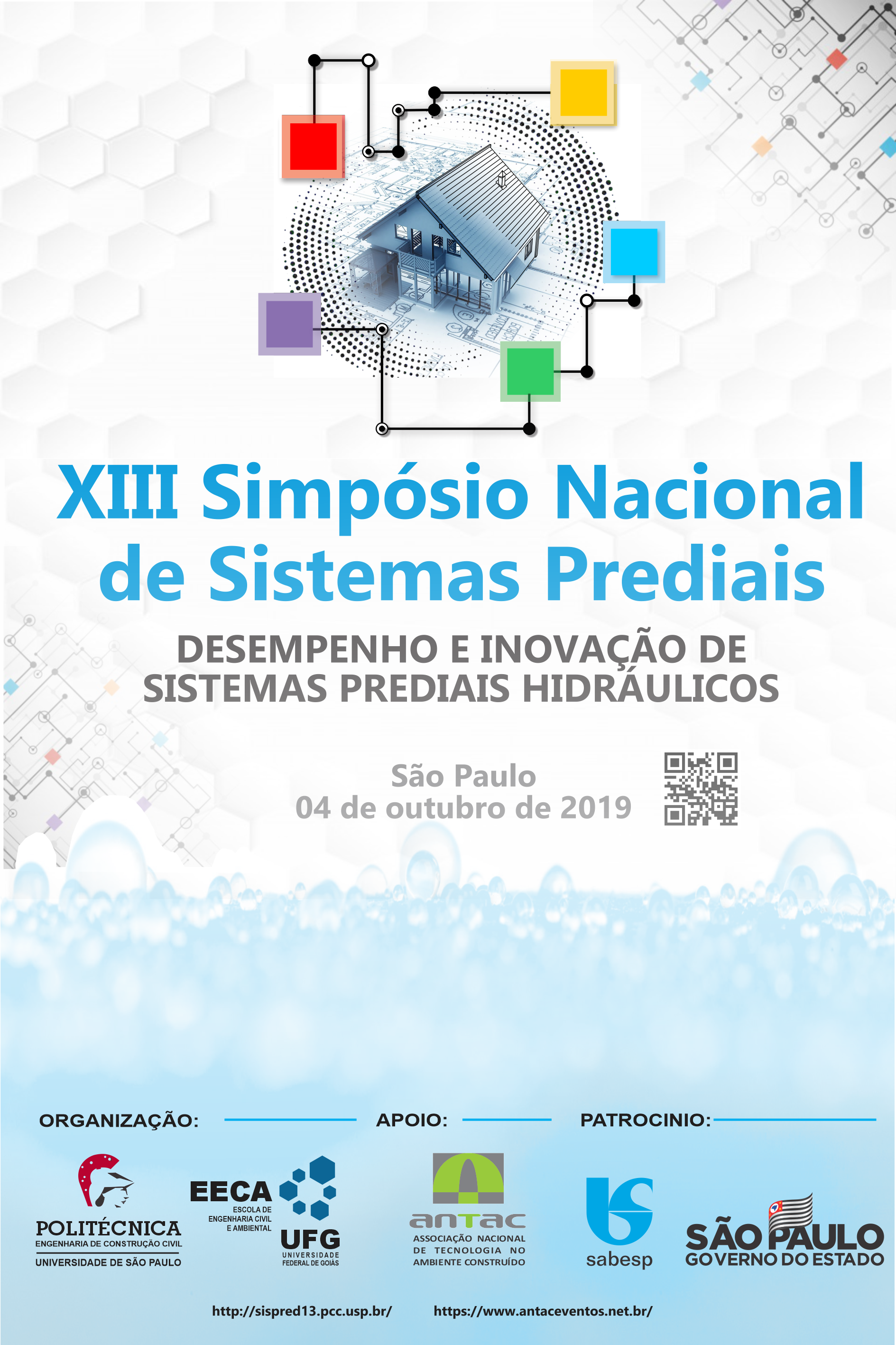Comparative analysis between siphonic and conventional roof drainage system
DOI:
https://doi.org/10.46421/sispred.v1i.1613Keywords:
Roof Drainage System, Siphonic System, Rainwater Flow, Drainage, CostsAbstract
ABSTRACT: The search for more effective, cheaper and more eco-friendly processes is an issue that is becoming more common nowadays. This study has the goal of comparing two roof drainage system methods: Conventional Method, regulated by the NBR 10844 (ABNT, 1989), where the flow in vertical and horizontal pipes goes partially full; and Siphonic Method, regulated by the BS 8490 (BSI, 2007), where the flow goes on a full bore state, aiming to evaluate their main methodological differences and similarities, performing a financial analysis for both methods. To obtain the desired results, 10 industrial storage units had their roof drainage system designed with different roof areas between them. The financial viability between the methods was calculated by estimating materials and labor costs for the scenarios, obtaining a graphic relation between cost and roof area. It was considered brands available in the national market for both roof drainage systems. After performing the calculations and comparing the values between the designs, it was noted that for a roof area greater than 2935,57 m², the Siphonic System is more financially viable compared to the Conventional System.
Downloads
References
AMERICAN SOCIETY OF MECHANICAL ENGINEERS. Siphonic Roof Drains. ASME A112.6.9, 2005.
ASSOCIAÇÃO BRASILEIRA DE NORMAS TÉCNICAS. Instalações prediais de águas pluviais. NBR 10844, Rio de Janeiro, 1989.
BRITISH STANDARD INSTITUTION. Guide to Siphonic Roof Drainage Systems. BS 8490, 2007.
BRITISH STANDARD INSTITUTION. Gullies for buildings. BS EN 1253-1:2015.
CENTRE SCIENTIFIQUE ET TECHNIQUE DE LA CONSTRUCTION. Étude des conditions d’écoulement dans les colonnes. Pr partie: colonnes rectilignes alimentées par leur sommet: relation entre le débit d’eau et la charge sur la colonne. Bruxelles. 1972.
COSTA, A. Relação Intensidade/duração/período de retorno de chuva em Goiás. First International Symposium on tropical Savannas. Brasília: EMPRAPA – CPAC. 1996.
GONÇALVES, O.; OLIVEIRA, L. Sistemas Prediais de Águas Pluviais. Texto técnico. 1998, 118f. Departamento de Engenharia de construção Civil – Escola Politécnica da USP. São Paulo, 1998.
MAY, R.W.P et al, Design of gutters and gutters outlets: theory and experiment. Hydraulic Research Station. Wallingford, 1982.
MAY, R.W.P.; ESCARAMEIA, M. Performance of Siphonic Drainage Systems for Roof Gutters. Report SR 463. September, 1996.
PEREIRA, J.P. Sistemas prediais não tradicionais de drenagem de águas residuais pluviais. Sistemas sifônicos ou em pressão. 2012. 96f. Dissertação de mestrado – Universidade do Porto, Porto, 2012.
SAINT-GOBAIN. EPAMS – Solução em drenagem pluvial pressurizada. 2010 Haute-Marne, França.
SAINT-GOBAIN. Technical Assesment 14+5/09-1338. Syphonic Rainwater Drainage System. 2010. Haute-Marne, França.
SINAPI, Sistema Nacional de Pesquisa de Custos e Índices da Construção Civil. Versão 002. 2017.
TCPO, Tabela de Composição de preço para Orçamento. São Paulo, PINI, 2013.

